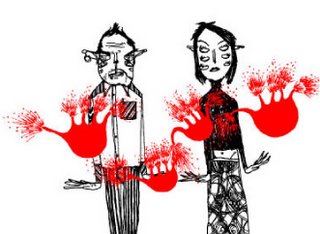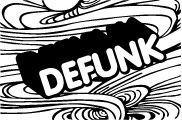Local leading design brand consultants.
 Chimera is the largest leading independant brand design consultants in Malaysia, with a multi disciplinary approach to branding. This evidently shown through their portfolio with an impressive clientele list. Their works are thought provoking and layered with simplisitc but meaningful design touches that reveals a soul in their work that I've not seen in many other companies.
Chimera is the largest leading independant brand design consultants in Malaysia, with a multi disciplinary approach to branding. This evidently shown through their portfolio with an impressive clientele list. Their works are thought provoking and layered with simplisitc but meaningful design touches that reveals a soul in their work that I've not seen in many other companies. Kawakong is a simple but delightful studio-based graphic and identity design consultant. Located in Sunwaymas commercial centre this dynamic duo have an interesting diversity of work that reveals strong concepts with depth and value.
Kawakong is a simple but delightful studio-based graphic and identity design consultant. Located in Sunwaymas commercial centre this dynamic duo have an interesting diversity of work that reveals strong concepts with depth and value.
What Goes Into a Creative Brief?
At its worst, a creative brief baffles the designer with vague statement and catch phrases; at its best, it guides with a tightly defined strategy and relates with a large goal; and the designer should say "I get it". Creative brief is the soul of the design process and is crucial to its success. They differ in form and terminology, but most cover these 7 major points:
1. What is the Objective? Usually at the top of the creative brief. What action do we want the consumers to take? The most frequent answer is "We want the consumer to buy a product." The objective should be simple and easily communicated.
2. Who are the Target Audience? If you try to talk with everyone, you're not talking directly to anyone. The broader your target, the blander, your message. You need a potrait of the target audience's attitude and usage patterns- beyond mere demographics.
3. What is the Key Consumer Benefit or Core Idea? The one single idea we want the target audience to take out of the design. The essence of this is sacrifice. You have to give up some points to make the important ones stand out. All the great success stories are simple, not complicated. They say one thing - brilliantly.
4. What is the Positioning? There's a need to set your design and message apart from competitors. Positioning is different from consumer benefit as it deals mainly with setting yourself apart from competitors who are claiming the same key consumer benefit.
5. What is the Tone of Voice or Manner? What is the personality of the brand. Watch out for dissonance between design and the company overall message.
6. What is the Media? Understanding the media is always important in a design process. The medium itself invites a designer to think out of the box such as shapes, texture, time to get the message to leap out of the poster, website or tv to the consumer. 7.
When is the Deadline? It is a part of the creative brief that leaves no room for personal interpretation. Use it to plan the process you will take to execute the work and make sure you deliver it on time.
Research Improves the Odds
If you're the type that can put your work out there without research and instantly people will jaw drop at your uncanny ability to send the message across, set trends and along the way you'd even win a few international awards along the way. Need not read further. Otherwise, good research improves your odds immensely. Here are 7 good practice when doing research:
1. Set the objective. What do you want to find out from your research? It is not about compiling a bunch of nothings or even showing off your knowledge on things that are not result specific. Reseach like design is problem solving.
2. Test the right sample. Test the design on the intended target audience. How they react to your design simulates how it will turn out in the market. The bigger the number the higher the probability.
3. Location, location, location. Test your design in the media where it runs whether its tv, in store or even in-flight on an airplane.
4. Use te appropriate technique. Different technique yield different results. Focus group and one on one in depth interviews are great for qualitative validation. Go beyond numbers.
5. Remember that people buy your client's product or message, not your design. When doing research focus on the message more than your design. Test "Is the message getting across?" and not "Is the design nice?".
6. Test alternatives. It's better to find your sure winner losses to another approach in testing than in the market. Make sure there's alternatives.
7. Track the results of your design. Research shouldn't stop when the creative process begins ends. Tracking lets you measure and find out whether what you're doing is working or otherwise.



